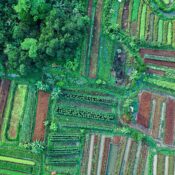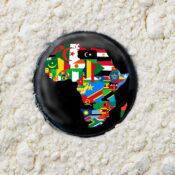The Origin and Birth Order of the Paloga Chiefdom
By Lamac A. (2023)
Origins of Paloga Leadership
Originally, the Ker (chieftainship) of Paloga resided in the Pocu Kal lineage of the Pacuu/Pocu clan. However, leadership eventually shifted to their son, Langoya, which led to the formal establishment of the Paloga Chiefdom.
According to oral traditions, this transfer occurred because the Pacuu were deeply engaged in hunting and beekeeping. As a result, they struggled to fulfill the demanding responsibilities of Rwotship (kingship or leadership).
Settlement at Lamwo Hill – Aluu
The Pacuu/Pocu originally settled atop Lamwo Hill, in a place known as Aluu. They were the first to establish a chiefdom in what is now Paloga, and their traditional saying was:
“Ojuta Yee, Aluu Ye!”
Historically, people lived in mountainous regions due to fear of attacks from neighboring communities. If you climb Lamwo Hill today, you’ll still find ancient artefacts and fossils at the Aluu site—evidence of early Pacuu settlement. This area, rich in bamboo today, was once a thriving community. Meanwhile, the Lomura of today’s Pabibe resided in Lela Otangi, also called Otangi Lomura.
The Founding Family of Paloga
The Pacuu are remembered as the founders of the Paloga Chiefdom. They are honored as the Adayo (originators) of the Palogarians. This is largely due to Alengkitera, a Pacuu daughter who married Piko (Opiko)—a man from the Lango of Koki, tracing Eastern Nilotic roots in present-day Sudan.
The Journey of Piko (Opiko)
According to legend, Piko and his elder brother quarreled during a famine over the intestines of a tortoise. When his brother refused to share, Piko declared “ka en okun woko” (if that’s how it is, I’m leaving), and left on a long journey through wild terrain until he reached Keca, a Pacuu-inhabited area.
There, he met Alengkitera, who often tended a Lawera sorghum garden. Piko first saw her inside an okelu, a shelter built in the garden. After a chance encounter, their relationship grew in secret until Alengkitera became pregnant.
When confronted by her parents, she confessed everything, even the timing of Piko’s visits. True to her word, her parents caught him “red-handed” and later accepted the union. The couple had four sons:
-
Jaa (Waja)
-
Langoya
-
Bolo
-
Kwong
While the ancestry of Cuu (the broader lineage) remains partially unclear, ongoing historical research continues to shed light on these roots.
Clans of the Paloga Chiefdom
The Paloga Chiefdom comprises several foundational clans:
1. PACUU / POCU
Though some claim the Owolo (Eastern Nilotic) wiped out most of the Pacuu, strong evidence confirms their continued presence. Today, they inhabit areas around the Aringa River such as Keca, Lomec Dog Gudu, and Katebo, bordering Padibe. Some also migrated to Katum to join the Pobogo/Pobwodo of Padibe.
Sub-clans (Dog Ot):
-
Dog ot pa Odoc
-
Dog ot pa Oruk
-
Dog ot pa Muwa
2. PAWAJA
The Waja were the firstborn of Cuu.
They primarily live along River Aringa, including settlements like Aloi (east) and Marakac, Kangole (west).
Sub-clans (Dog Ot):
-
Dog ot pa Lareba
-
Dog ot pa Tongweno
-
Dog ot pa Belimo
-
Dog ot pa Lawi
-
Dog ot pa Aguma
3. PALANGOYA
Founded by Langoya, the second-born.
They reside in Gai Central, Gai-Alokorom, Gai-Juba, and areas west of Paloga Trading Centre.
Sub-clans:
-
Dog ot pa Lanek
-
Dog ot pa Acic (home of current Rwots)
-
Dog ot pa Akera
-
Dog ot pa Loyina
4. PABOLO
Descendants of Bolo, the third son. They mainly live in Lomec Tomato, Lobiluka (now Katebo), and Obokeolot.
Sub-clans:
-
Pa Areda (Jo Tuma Atoo = Jo Tumato)
-
Jo pa Imico
-
Jo pa Olik
-
Jo pa Okeny Anwoka
-
Jo pa Abongo
-
-
Pa Aroc (Jo Too Para Atir = Jo Loparati)
-
Jo pa Agoma (currently in Pajimo, Akwang, Kitgum)
-
5. PAKWONG
Descendants of Kwong, the fourth son. Details to be expanded in the upcoming book.
6. GENA
Another key clan of the chiefdom. More information will be included in the full historical documentation.
Further Reading Coming Soon…
Note from the Author:
More details will be included in my complete book once documentation is finalized.
Cultural References & Identity
-
Duoko Geno – (Onangi / Joluos and Anyuak)
-
Duoko Gen – (Acoli)
-
Wan Aciel – Our Unity, Our Call
Copyright & Intellectual Property Notice:
All rights reserved. No part of this text may be duplicated in any form without prior permission from the author.
Further Reading & Resources
To learn more about the history, culture, and oral traditions of the Paloga Chiefdom, explore these sources:
-
Uganda National Cultural Centre (UNCC) – Learn about indigenous traditions, clan structures, and oral heritage.
-
UNESCO – Intangible Cultural Heritage in Uganda – Discover how Uganda’s oral traditions and cultural practices are preserved internationally.





